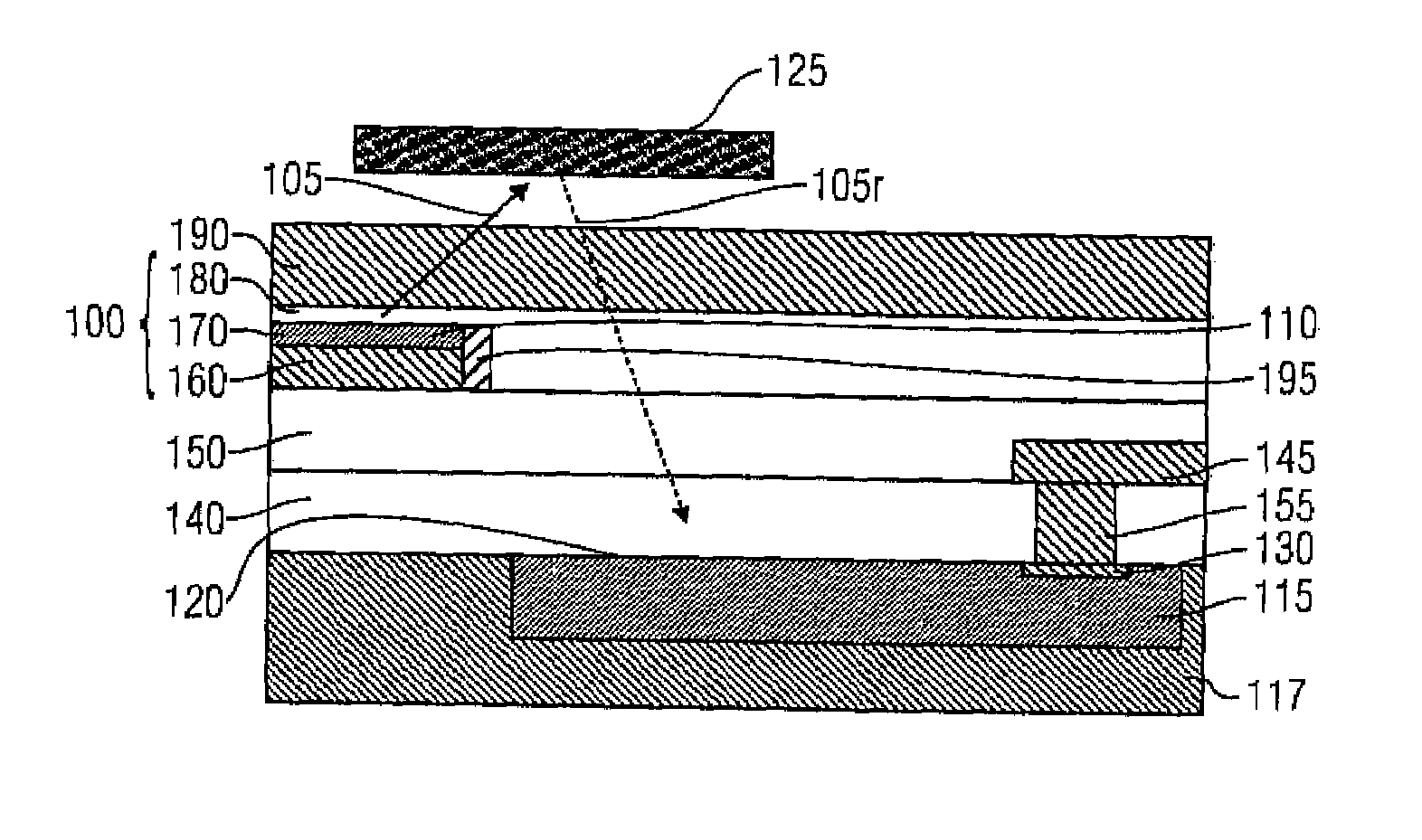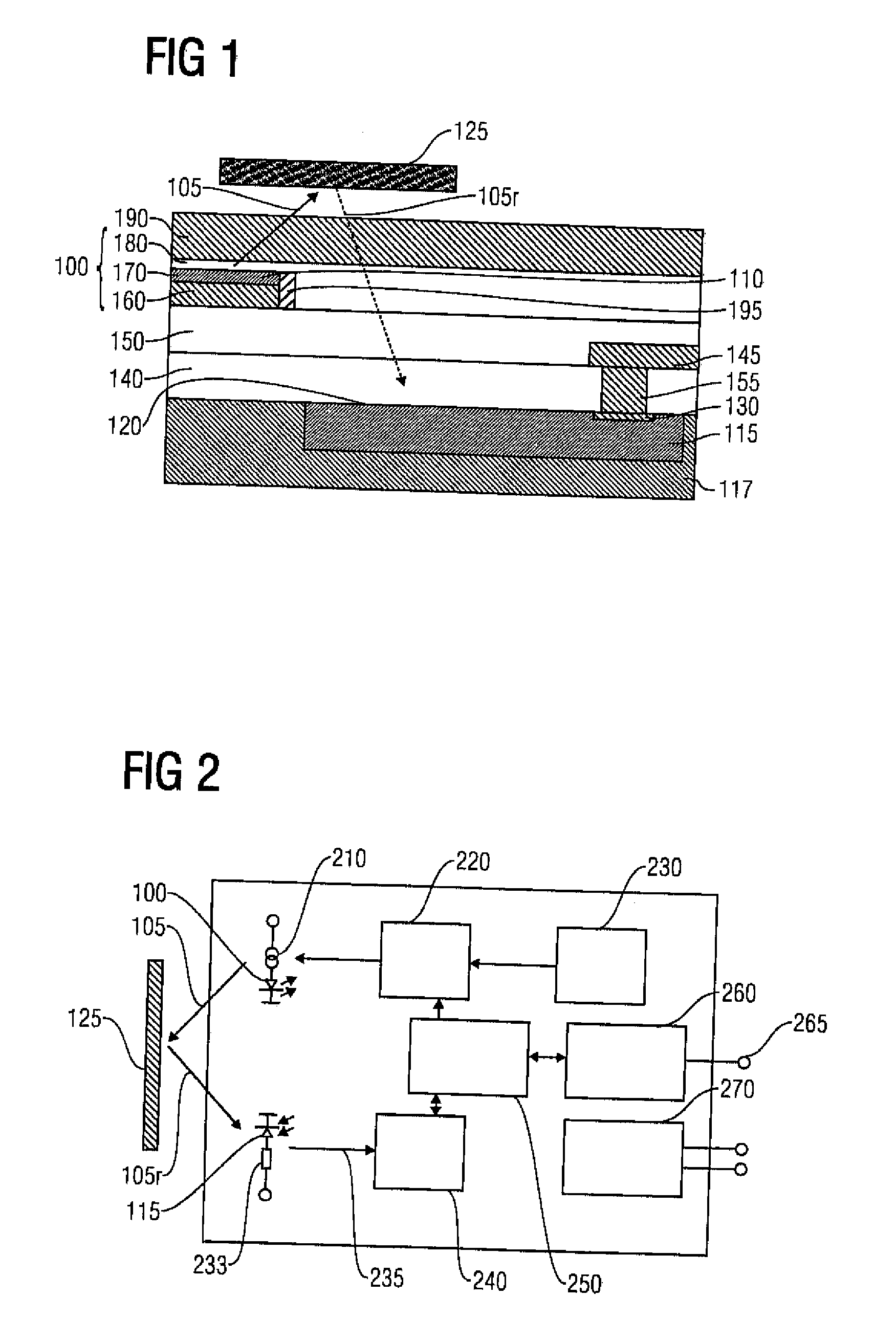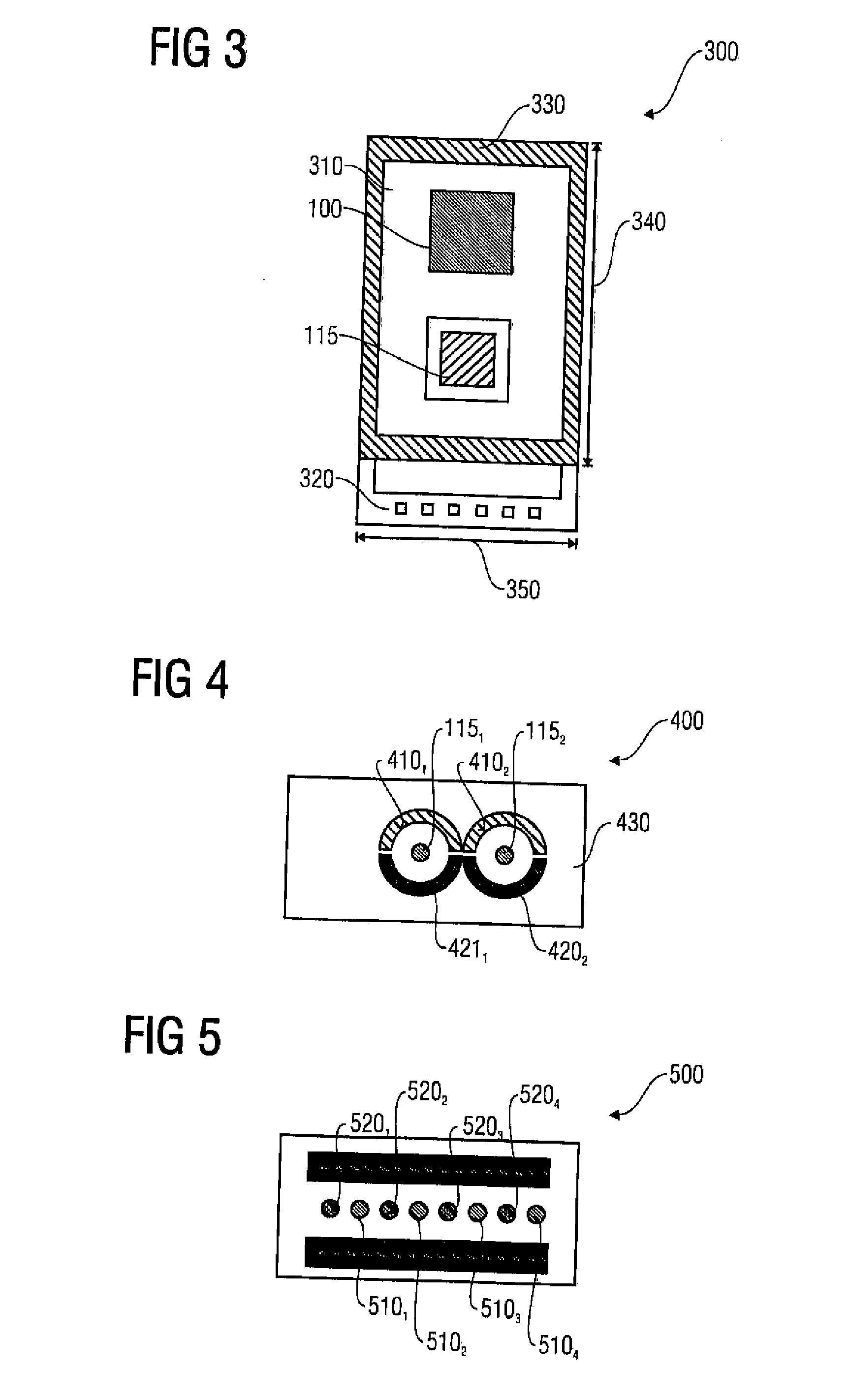Reflex coupler with integrated organic light emitter
a technology of organic light emitters and reflex couplers, which is applied in the field of reflex couplers with organic light emitters, can solve the problems of inability to produce both devices on the same substrate, inability to integrate hybrid solutions, and disadvantages of light-emitting diodes on the basis of inorganic semiconductors, etc., and achieves the reduction of chip area, cost reduction, and integration of hybrid solutions
- Summary
- Abstract
- Description
- Claims
- Application Information
AI Technical Summary
Benefits of technology
Problems solved by technology
Method used
Image
Examples
Embodiment Construction
[0044]Before the present invention will be explained on the basis of the drawings in the following, it is pointed to the fact that the same elements in the figures are provided with the same or similar reference numerals and that repeated description of these elements will be omitted.
[0045]FIG. 1 shows a cross-section through a CMOS-integrated reflex coupler construction with an OLED 100 as top emitter with a light-emitting surface 110 and a photodiode as photodetector 115. In this embodiment, a p substrate 117 comprises an n well 115, which is contacted via a connecting contact 130. On the p substrate 117 with the n well 115, a layer sequence with an ILD layer 140, followed by a first IMD layer 150, into which a first contact layer 145 is embedded, is deposited. The connecting contact 130 is connected to the first contact layer 145 via a bridge or via 145. The photodiode as photodetector 115 may, for example, be formed at a pn junction of the n well to the p substrate 117 or to a p...
PUM
 Login to View More
Login to View More Abstract
Description
Claims
Application Information
 Login to View More
Login to View More - R&D
- Intellectual Property
- Life Sciences
- Materials
- Tech Scout
- Unparalleled Data Quality
- Higher Quality Content
- 60% Fewer Hallucinations
Browse by: Latest US Patents, China's latest patents, Technical Efficacy Thesaurus, Application Domain, Technology Topic, Popular Technical Reports.
© 2025 PatSnap. All rights reserved.Legal|Privacy policy|Modern Slavery Act Transparency Statement|Sitemap|About US| Contact US: help@patsnap.com



